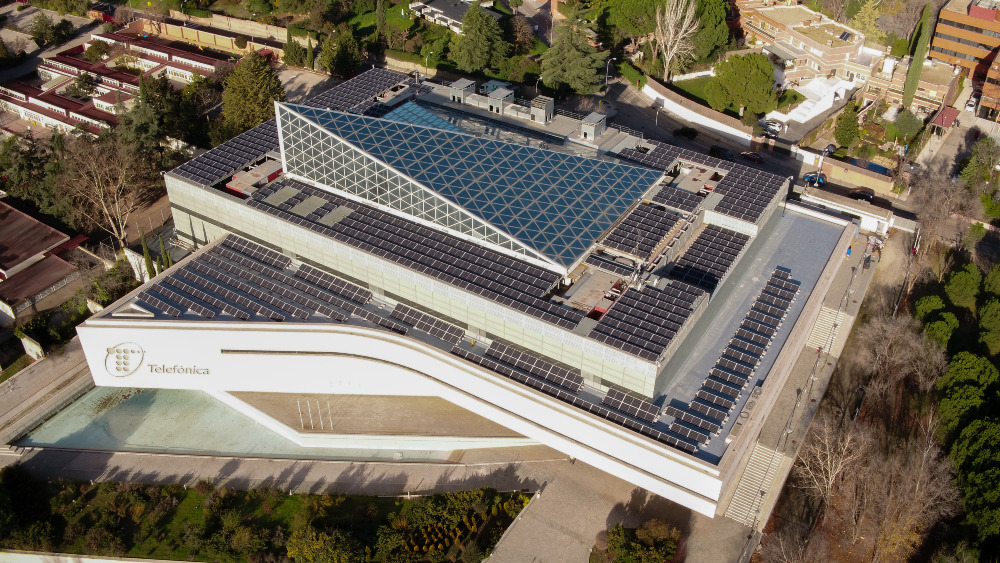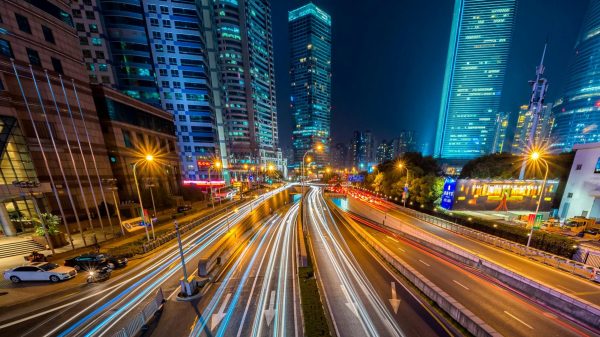Telefónica is making progress in energy efficiency thanks to the application of technological innovations and projects that are enabling the company to reduce its consumption while managing the significant increase in data traffic recorded in recent years. Since 2015 alone, Telefónica has reduced its consumption by 8.6%, while traffic has multiplied by 8.6 times.
With the exponential growth in demand for digital services and the continuous development of communication technologies, telecommunications companies face significant challenges in terms of energy efficiency and sustainability. To manage these, Telefónica has implemented a series of innovative projects under the company’s Autonomous Network Journey (ANJ) programme, focused on optimizing energy consumption and reducing the environmental footprint, while providing quality services and fostering innovation.
Telefónica’s commitment to energy efficiency goes back to 2005, and as early as 2010 it began to record the impact of the efficiency measures implemented. Since then, the company has developed a total of 1,574 projects that have generated recurring savings of more than 2,200 million euros, more than 13,800 GWh of energy and 4 million tonnes of CO2 equivalent avoided. The different initiatives and their results position Telefónica firmly in the direction of meeting its Energy and Climate Change Objectives: to improve energy consumption per unit of traffic by 90% in 2025, compared to 2015; to achieve 100% renewable electricity consumption by 2030 in all markets; and to reduce operational emissions by 90% in 2030, compared to 2015, and to achieve net zero emissions in 2040, including its value chain.
Network modernization and legacy shutdowns
The ways in which the company can gain in efficiency, hand in hand with technology, are diverse. This is mainly achieved by modernizing the network, replacing copper with fibre optics, which is 85% more efficient, and deploying 5G, which is up to 90% more efficient than 4G. Also through migration to cloud, virtualisation, up to 27% more efficient than legacy environments, implementation of Power Saving Features (PSF) and AI/ML platforms, all with the aim of optimizing energy consumption by up to 40% while maintaining quality.
Telefónica also achieves efficiencies through the renovation of power plants and air conditioning equipment. Air conditioning, which plays a key role, can be carried out with outside air (free cooling), by immersion or by switching off certain air conditioning equipment. It can also be accomplished by compacting technical rooms, by renovating obsolete equipment or by confining cold aisles and increasing the temperature of rooms and associated water circuits. Because of these measures, Germany, for example, has defined a consolidation plan that envisages fewer but better infrastructures with a 15% reduction in energy consumption.
Legacy switch-off also plays a key role in terms of efficiency because it minimizes the coexistence of networks, both in the mobile and fixed networks. In Spain, and in the context of the evolution of copper infrastructure towards ultra broadband solutions, a migration that will culminate from 2024, coinciding with the company’s Centenary, 1,914 copper retail exchanges were switched off in 2023, a total of 4,150 since 2014. Latin America also made progress in switching off the 2G network, especially Uruguay, which has already reached 100%, representing a 17% decrease in consumption.
Relying on renewable energies
The reduction in the consumption of fossil fuels and the promotion of renewable energies also mark Telefónica’s sustainable strategy. In the first case, through hybrid stations with photovoltaic solar energy and delaying the start-up of generators using high-cycle batteries (lithium). Also thanks to the use of more environmentally friendly fuels such as hydrogen/methanol. By the end of 2023, 100% of Telefónica’s electricity consumption at its own facilities in Spain, Germany, Brazil, Peru, and Chile will come from renewable sources. Globally, the figure is 84%.
The promotion of renewable energies involves prioritizing the continued signing of long-term power purchase agreements (PPAs), as well as the gradual increase in self-generation and a reduction in the purchase of guarantees from renewable sources. In Brazil, it is worth highlighting the continuation of the distributed generation project, which enabled 67 renewable energy plants to be commissioned by 2023, out of a total of 85 planned, which will generate more than 700 GWh per year in the country. Spain and Germany also have long-term renewable energy PPAs.
Telefónica is also working on self-generation of electricity. It has 484 renewable installations, including solar panel solutions, both in fixed network buildings and in mobile network base stations. An outstanding example of this initiative is the implementation in 2023 of 11 self-generation projects in Ecuador, where annual production is estimated at 34,000 kWh. At group level, Telefónica self-generates around 6 million kWh of electricity.
Energy efficiency and disruption
For the implementation of energy efficiency projects, Telefónica has opted for disruptive models. In Brazil and Latin America, for example, it has signed the Energy Savings as a Service (ESaaS) agreement to modernize infrastructures and improve the energy efficiency of sites, all with the investment of a third party. Spain implemented four ESaaS-based projects in 2023 out of a plan of 40 plants, with savings of around 45 GWh per year.
Telefónica also has an internal carbon price that comes from calculating the Total Cost of Ownership (TCO) in the process of acquiring energy-intensive equipment, fuels, and fluorinated gases. This mechanism makes it possible to consider not only the acquisition price, but also the energy consumed, and the emissions generated during its useful life, which helps to make better investment decisions, opting for more efficient equipment that will have lower operational emissions throughout its useful life.









